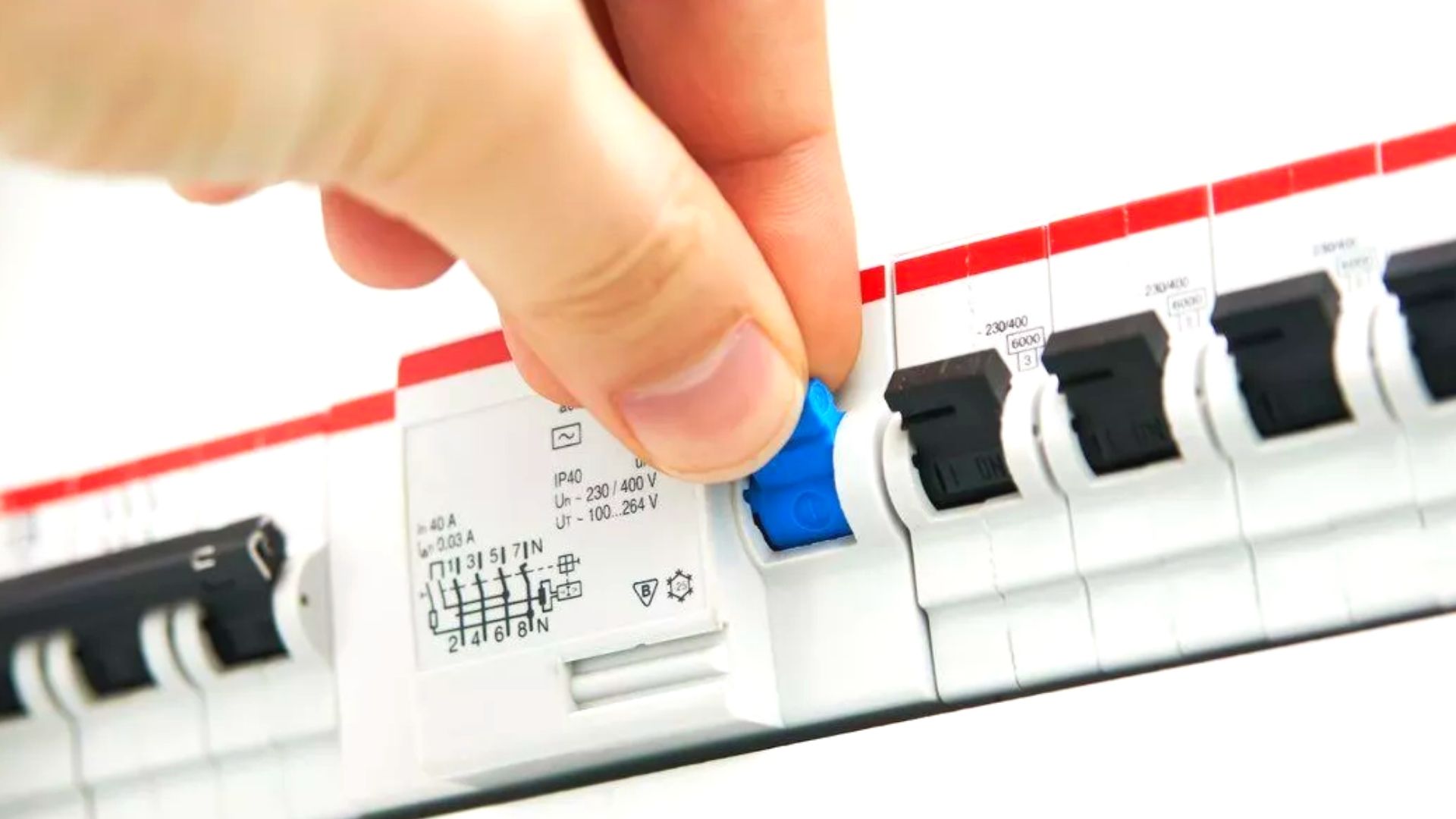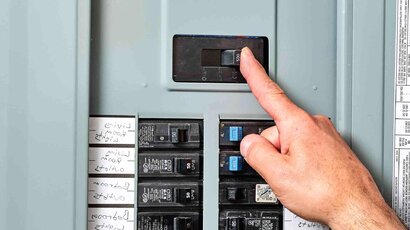Do you know the difference between electrical safety switches and circuit breakers?
Most people talk about the two interchangeably, but they are not the same. Yes, these devices protect you and your home from electrical damage; that’s the one similarity between the two. Even though these devices are standard in every household, some misconceptions exist.
Since these components keep you and your family safe, it’s essential to know their usage. We’ve compiled a short guide explaining the difference between an electrical safety switch and a circuit breaker. Let’s begin by understanding them individually.
Every appliance or machine you use is run on electricity. You already know this, but there are moments when an abnormal amount of current can flow due to some fault in the system. This can get pretty dangerous and cause burns, electric shock and even electrical fires. That’s when the electrical safety switch comes in. It shuts off the power to prevent exposure to large amounts of electricity.
Essentially, electrical safety devices prevent you from contacting faulty and harmful electric currents. This device works by detecting electrical leaks in your electrical system at home. The moment it finds the electrical leak, it cuts off the power/electricity in the house. Some electrical safety switches cut the power of the particular room or area affected instead of shutting off electricity in the house.
The electricity goes out for the entire house if the power board is in the main home switchboard. And if the fixture is attached to individual power outlets, it will act upon only the faulty areas.

Safety switches face issues when there is a strain from supplying power to too many devices. When many devices work simultaneously in the house, the safety switch installed may overload and shut the electricity supply. This phenomenon is called electrical tripping, a common problem in residential buildings. Switch-tripping can also happen due to faulty appliances and water damage.
Like safety switches, circuit breakers also detect unusual electric currents in the system and shut off the power immediately. This safety mechanism is installed to protect your circuits at home. If there is a fault in wire connections or a leak in the system, there is a sudden increase in strong enough power to create fires.
So, to prevent any mishap due to powerful electricity flow, the circuit breaker finds out when there are excessive amps of electricity. Then it quickly proceeds to cut off the power from the source.

Wire or incorrect installation can affect your appliances and even damage them beyond repair. You can identify wire problems by checking for flickering lights, smoke from power points, or trouble with appliances.
Also, if you plug too many devices into one outlet, there may be a chance of circuit overload. Ideally, any device can handle a certain number of amps, but if this number exceeds, you’ll see the effects in your appliances.
You may not know the correct amount of electricity flowing in your home. But if you notice trouble with devices and electrical appliances, consult a professional to check the circuit board and breakers.
When it comes down to differences, it’s mainly what or who the device protects that is unique to each one. Safety switches are designed to monitor the flow of electricity and cut off the power when a leak is detected. But this device is mainly intended for human safety. Its main purpose is to protect humans from electric shock, burn and even death.
And while your home may have a circuit breaker, you need a safety switch to protect the people in the house/office.
So what about the circuit breakers? These devices also detect overload in electrical units and act quickly to disrupt the power flow. But they are installed in the switchboards to protect the system and wiring from damage.
They protect against overload in power points and prevent fires and wires from burning. But the difference is they do not protect humans from electrocution as a safety switch does. In short, a safety switch controls overload in electricity for human safety, while a circuit breaker does the same for wire and system safety.
While they have similar purposes and functions, they are still quite different, so you can’t substitute one for another. There’s no doubt that circuit boards will cut off the power just the same, but they aren’t switches. So, you cannot use a circuit board as a safety switch and hope for the best.
It can be dangerous if someone comes in contact with a PowerPoint without a safety switch. In the same way, please don’t get a switch and wrap it up without installing a circuit board. While the switch can detect an overload in power, it can melt or catch fire because it cannot protect itself against damage.
Also, there’s another significant reason not to use a circuit breaker in exchange for a safety switch. The safety switches are designed to handle frequent uses. This means they can tolerate power’s on-and-off action several times.
On the other hand, circuit breakers are not prepared to handle such frequent switches between on and off. So, it will eventually break down if you use it too often.
In Australia, it’s mandatory to install safety switches in all residential and domestic buildings; thus, if you’ve got a newer home, you probably have one. But you should check to be sure. In most cases, the devices will be marked and labelled so you can identify them.
But if you’re unsure, contact an electrician to check it to ensure both devices are in place and working. If you live in an older home, chances are these devices may not be pre-installed, so hire a professional to get the job done.
Installing and repairing circuit boards and safety switches is not as easy as a DIY project. Only licensed professionals should be dealing with these parts of the switchboard. So, never fiddle with these devices if you’ve got any power issues or outages. Call a trained electrician whenever you are in doubt about the power system.
Circuit breakers and safety switches are preventive devices that save lives and property. And they are not precisely new inventions either but are indispensable parts of switchboards in your home. For peace of mind, ensure both these devices are in place, protecting your home and family.
So, we hope that this short informative article clears your doubts about circuit breakers and safety switches. However, contact our team if you have further questions about using or installing these devices in Melbourne.
On that note, we’ll take your leave. Stay safe!
{{author:bio}}
Find them on their website: Precision Electrical & Plumbing, Facebook and LinkedIn.
Are you keen to learn about the different types of circuit breakers and their importance? Read our guide as we detail the benefits and uses of each circuit breaker.
Read MoreDon’t know what to do when your circuit breaker keeps tripping? Don’t worry, because we have an informative guide on the topic to help you identify the cause!
Read MoreInstalling a safety switch in your home protects you and your family! Learn how to test your safety switch and what to do when it trips in our guide.
Read More


